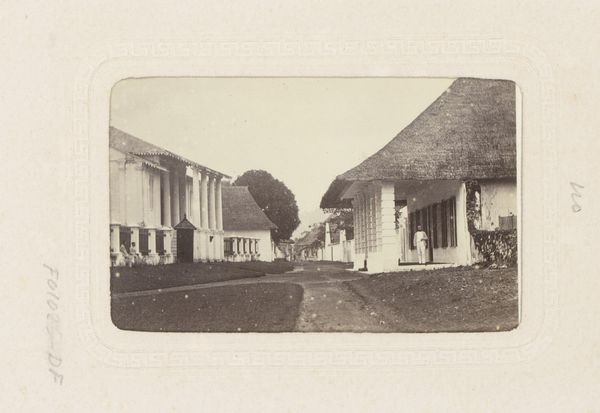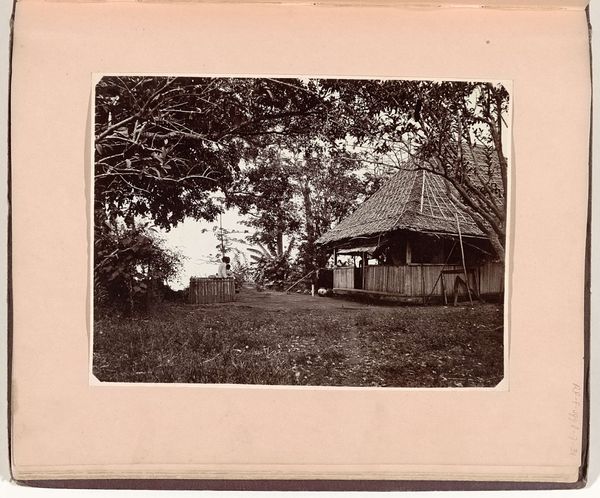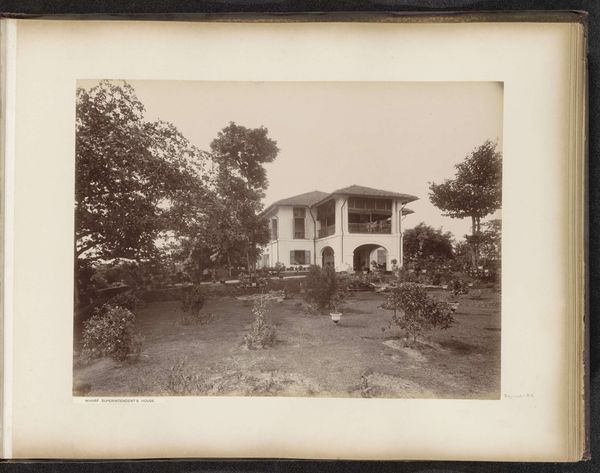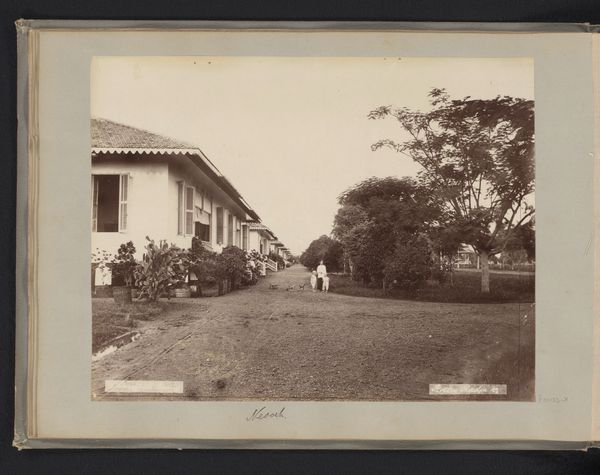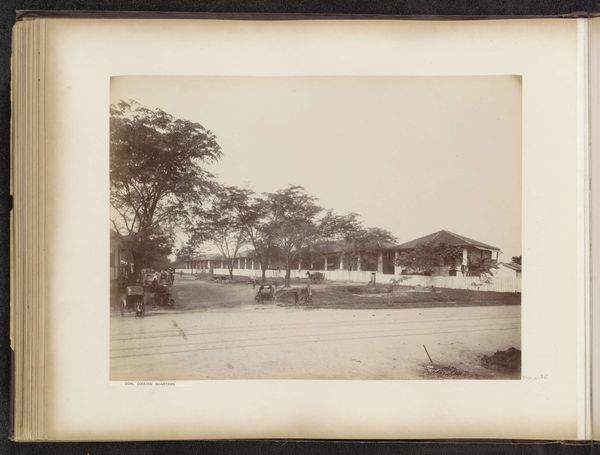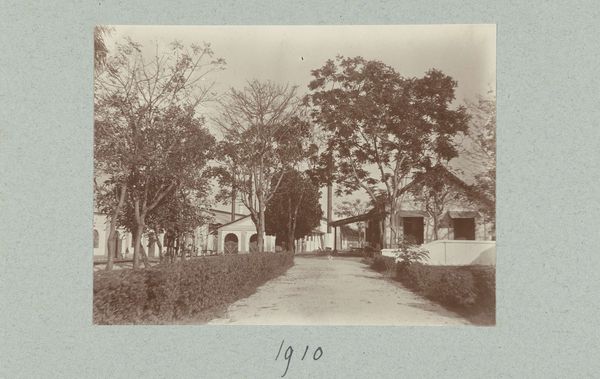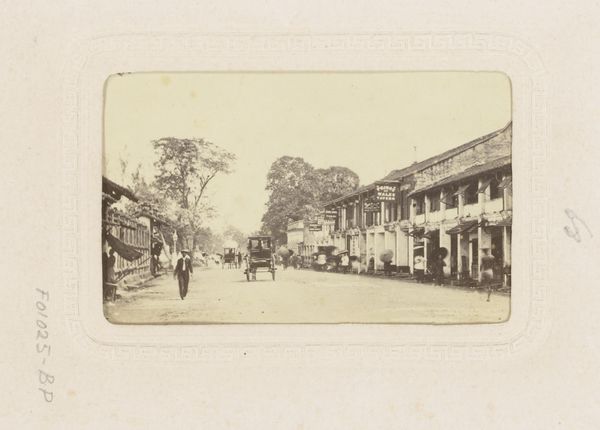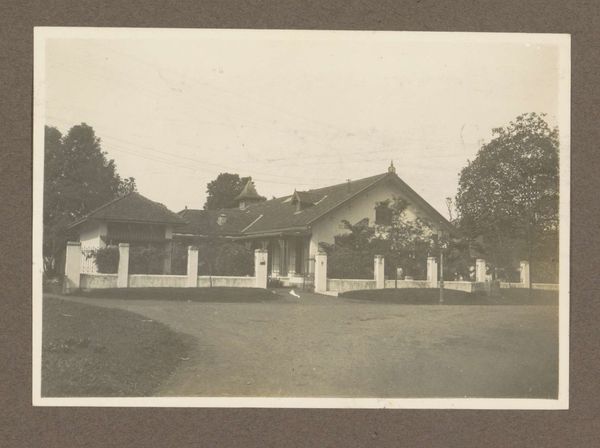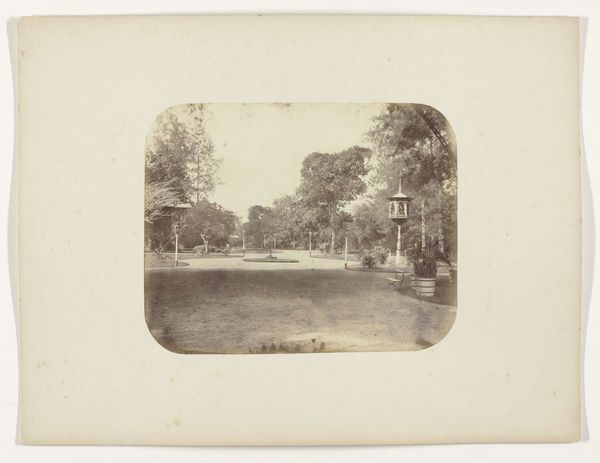
photography, albumen-print
#
photography
#
orientalism
#
19th century
#
street
#
albumen-print
Dimensions: height 85 mm, height 52 mm
Copyright: Rijks Museum: Open Domain
Editor: So, here we have Woodbury & Page's albumen print, "Straatgezicht te Ambon", taken sometime between 1857 and 1880. It feels very staged, almost ethnographic. What can you tell me about it? Curator: I'm drawn to the material reality captured here. The albumen print itself, a product of colonial technology and trade networks, presents a carefully constructed image of Ambon. Think about the labor involved in creating the photograph itself – the preparation of the albumen, the exposure, the development. Editor: So, you see the photograph as less about what it depicts and more about what it *is*? Curator: Precisely. The crisp detail allowed by the albumen process highlights the textures of the buildings and foliage, but more importantly, the photograph documents the imposition of a particular visual order onto a colonized landscape. Consider how the built environment, supposedly "native," uses specific construction techniques, a process affected by available tools, economic models, and access to raw materials dictated by colonial powers. The very act of photographing this street is an act of claiming and defining. What looks tranquil has this undercurrent of power structures informing all production. Editor: That’s not how I initially looked at it, seeing the street as a document of a certain time in a place. So the "orientalism" comes through in the labor and materials? Curator: It's there in the constructed gaze of the photographer, and in the selective portrayal of this place, mediated through the very materiality of the print. The materiality is inextricable from the colonial context; how could the scene represented be understood if the material processes were erased? Editor: I’ll definitely be paying more attention to that perspective in future, it gives the whole work a new level of complexity.
Comments
No comments
Be the first to comment and join the conversation on the ultimate creative platform.
